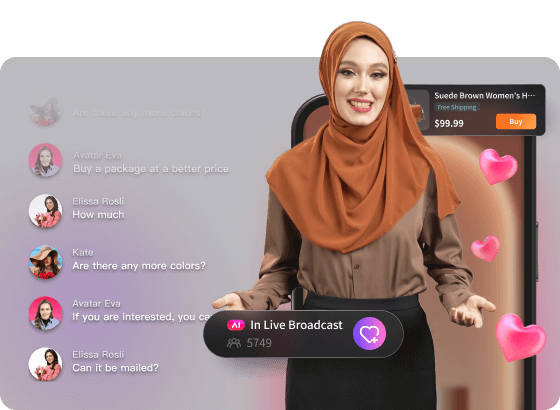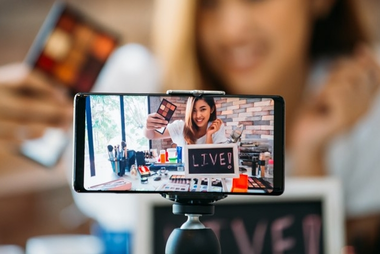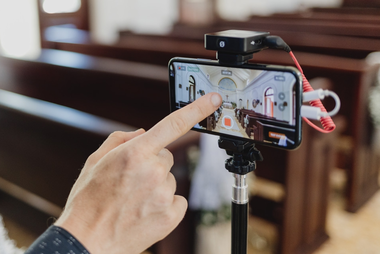In a world where instant digital interactions rule, live streaming technology has quickly become the go-to medium for real-time communication, brand engagement, and entertainment. Whether it’s connecting with fans, running an e-commerce show, or streaming live events, it’s everywhere! From Facebook Live to YouTube and Twitch, this technology has transformed how brands and individuals connect with audiences. But what makes it tick, and how can you make it work for your business?
Let’s break down the ins and outs of live streaming technology, from its fundamental mechanics to the AI innovations reshaping its future.
What is Live Streaming Technology?
Live streaming technology allows for the instant transmission of audio and video content over the internet. It enables audiences to view events as they happen. But what’s the tech magic behind it? In essence, this technology uses a mix of hardware, software, and high-speed internet connections to deliver video to multiple devices in real time. Common protocols like RTMP (Real-Time Messaging Protocol) and HLS (HTTP Live Streaming) ensure smooth, uninterrupted playback, regardless of the number of viewers tuning in.
By converting video into digital packets and delivering them directly to viewers’ screens, live streaming technology bypasses traditional broadcast infrastructure, making it fast, flexible, and accessible for anyone with an internet connection.
How Does Live Streaming Work?
The magic of live streaming technology boils down to a series of technical processes that happen almost instantly.
Encoding the Video Feed
Live streaming starts by capturing raw video and audio data. This raw data is encoded or compressed to reduce file sizes, making it manageable for fast online transmission. Encoders—both hardware (like dedicated encoding boxes) and software (like OBS)—compress video and audio signals without sacrificing quality.
Transmission and Streaming Protocols
To deliver video effectively, protocols like RTMP and HLS step in. RTMP was originally developed by Adobe for Flash video but is still popular for its low latency, making it ideal for live broadcasts. HLS, developed by Apple, is compatible across various devices and allows streams to be broken into chunks, creating a smooth viewing experience.
Content Delivery Networks (CDNs)
CDNs are the unsung heroes of live streaming technology. These networks consist of servers distributed across various locations. It can ensure viewers around the world receive the video from the nearest possible server. This global reach reduces buffering and enhances video quality, giving users a seamless streaming experience.
Decoding and Playback
Finally, on the viewers’ end, the device decodes and plays back the live video stream. Video players on apps and websites convert the digital packets back into a viewable format, delivering crisp visuals and clear audio.
Together, these processes form the backbone of live streaming technology. And it brings content from one device to potentially millions in the blink of an eye.
Key Components of Live Streaming Technology
Getting into live streaming? Here’s what you’ll need for a smooth experience.
- Hardware Requirements: Essential hardware includes cameras (from simple webcams to high-end professional cameras), microphones for clear audio, and encoders to compress and prepare video data. A robust setup ensures high-quality streams that engage viewers.
- Software Requirements: Streaming platforms like OBS (Open Broadcaster Software), Streamlabs, and paid solutions provide the software backbone. These tools manage your audio and video inputs and add elements like overlays and transitions for a polished, professional look.
- Network Requirements: Reliable high-speed internet is crucial. To avoid buffering, aim for at least 5 Mbps upload speed for standard definition (SD) streaming and 10 Mbps for high-definition (HD) content.
Together, these components support live streaming technology, creating a powerful ecosystem that transforms live events into digital experiences.
Popular Applications of Live Streaming
Live streaming technology is versatile, with applications spanning multiple industries:
Social Media Streaming for Influencers and Brands: Platforms like Instagram Live and TikTok enable influencers and brands to connect with followers in real time, fostering stronger audience relationships. Through live Q&As, product reveals, and interactive polls, they can build authentic connections that resonate with audiences more deeply than static posts.
E-commerce Live Shopping: Live streaming is revolutionizing e-commerce. By blending product demos with audience Q&A, live shopping events provide a dynamic, immersive sales experience. These events allow brands to showcase product details, receive instant feedback, and answer customer questions on the spot, making it a seamless way to boost conversion rates.
Online Events, Webinars, and Virtual Conferences: These events leverage live streaming for presentations, panels, and interactions with audiences worldwide. From educational workshops to keynote speeches, virtual conferences make it easy for audiences to access quality content without physical boundaries. And it fosters learning and collaboration across borders.
Gaming and Esports Live Streaming: Platforms like Twitch and YouTube Gaming bring gameplay into millions of homes, creating a vast community around gaming content. By streaming tournaments, “let’s plays,” and real-time commentary, gamers build loyal fanbases, engage audiences, and even monetize their streams through sponsorships, donations, and ads.
Each use case highlights the adaptability of live streaming technology, meeting diverse audience needs while keeping them engaged and connected.
Benefits and Challenges of Live Streaming Technology
With live streaming technology, brands and individuals can reach audiences in new ways, but there are a few obstacles to overcome.
Benefits
- Real-Time Interaction: Direct interaction with audiences builds trust and drives engagement, especially valuable in sales and branding.
- Increased Audience Engagement: Live content keeps viewers hooked with an authentic, immediate experience.
- Monetization Opportunities: From subscriptions to donations and live shopping, streaming is packed with ways to earn revenue.
Challenges
- Latency Issues: Delays can hinder real-time engagement and disrupt smooth conversations.
- Network Reliability: Poor internet connections result in lower-quality streams, negatively impacting viewer satisfaction.
- Technical Complexity: A robust setup requires technical knowledge, which can be challenging for beginners.
For those prepared, live streaming technology is a powerful tool, but a strong foundation is essential for avoiding these common pitfalls.
Experience Cutting-Edge AI Live Streaming Technology
In today’s digital age, high-tech solutions are essential for delivering a top-quality live streaming experience. Advanced technology not only improves streaming quality and efficiency but also enhances audience engagement and interaction—key factors in a world where real-time content is a game-changer. Using sophisticated live streaming tools helps creators and businesses stay ahead, ensuring their content captures viewers’ attention seamlessly.
This is where BocaLive steps in, an innovative live streaming software powered by cutting-edge AI technology. Designed to transform the live streaming landscape, BocaLive enables users to create professional, interactive, and engaging live broadcasts with minimal effort, setting a new standard in digital content creation.

BocaLive’s Highlight Features:
- AI-Created Scripts: BocaLive’s AI technology automatically generates live scripts based on product links or key topics, helping users prepare professional content in no time. This feature takes the pressure off content planning, making it easier to keep live sessions organized and dynamic.
- Customizable AI Avatars: With BocaLive, users can create their own customized AI avatars, adding a personal or branded touch to their streams. These avatars provide a unique, recognizable presence for 24/7 live broadcasting, ensuring a consistent and visually engaging stream.
- AIReal-Time Responses: BocaLive offers AI-powered real-time responses to viewer comments and questions, elevating interaction with audiences. The system even supports multilingual responses, making it easy to connect with global viewers without language barriers.
By combining the latest in AI with live streaming essentials, BocaLive enables a seamless, interactive, and visually captivating live streaming experience, perfect for creators and businesses alike.
Wrapping Up
In conclusion, live streaming technology isn’t just a tool; it’s a bridge connecting content creators, brands, and audiences in real-time. As we look to the future, the combination of live streaming with advanced AI tools like BocaLive holds incredible promise for e-commerce, entertainment, and beyond. Whether you’re streaming for fun or business, understanding the essentials of live streaming sets you up for success in the digital age.





Recent Comments